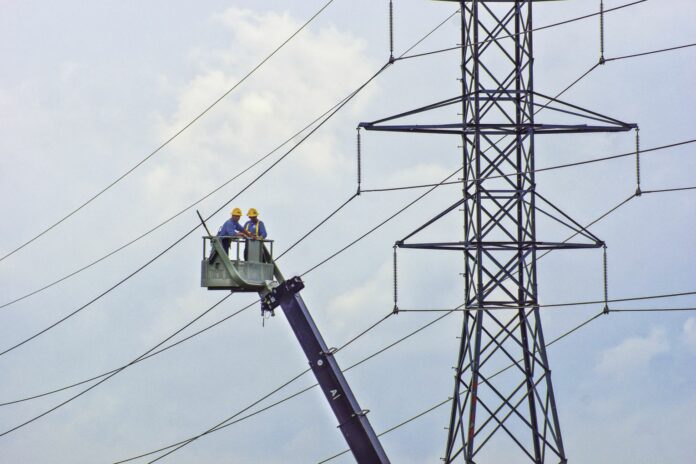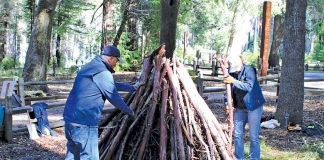The vision of Monterey Bay communities buying their electricity from a local, publically-owned utility that sells only carbon-free energy from renewable sources will become a reality this July. Monterey Bay Community Power (MBCP) will begin selling 100 percent “green” energy to residential customers on July 1st, and the bill from this new utility company will be incorporated into the regular bill from PG&E.
The MBCP is new, regional public utility under the control and oversight of local governments- created as joint powers authority between three county governments and 16 cities around Monterey Bay, including Hollister and San Benito County. It operates in partnership, but also as something of a competitor, with PG&E, using PG&E’s transmission lines, customer service capabilities and billing services.
The MBCP essentially replaces PG&E as the wholesale buyer of electricity in the tri-county central coast, buying 100 percent of its power from renewable, carbon-free electric power generators. MPCP then sells this power at the same regulated, retail rates as PG&E, using PG&E’s transmission lines and billing services, according to Marc Adato, Community Outreach & Events Coordinator for MBCP.
“We are able to operate much leaner than PG&E and retain net revenues and invest back into the local communities with some good projects and programs,” Adato said. This local, on-going investment in renewable energy- expected to incentivize the local “green energy sector” and create many new jobs- is made possible by the revenues that are not paid as dividends to the stock holders of the privately owned PG&E.
Current PG&E customers will be automatically enrolled in MBCP. Customers who want to go back to PG&E as their electric power source provider will have the opportunity to “opt-out” of the MBCP. Current PG&E programs such as CARE and FERA for low-income households will continue under the MBCP.
Those customers with their own solar equipment who periodically sell power back or get credit from PG&E can expect slightly higher prices from MBCP than the wholesale price paid by PG&E. According to Adato, the MBCP will pay closer to a mid-point between the wholesale and retail price for this “returned” electricity, thus encouraging more solar power gained from roof-tops.
Rate-payers will have the choice to invest the locally generated profit of the MBCP into different investment packages or plans, or simply chose to be paid back a 3 percent rebate, based on their consumption.
With some local fanfare, including congratulatory recognition of Santa Cruz County Supervisor Bruce McPherson, one of the key local leaders getting the MBCP established, the MBCP celebrated its “first day of electric service” in Monterey on March 1st. That was the first day that some 37,500 commercial, agricultural, industrial and municipal customers began buying power from the MBCP, accounting for nearly two-thirds of the region’s total power demand.
The next big and final step in the startup of the MBCP, after nearly five years of planning, studying feasibility and technical studies, and negotiating with the 19 jurisdictions involved, is turning the switches to provide about 235,000 residential customers with carbon-free power beginning July 1st.
According to the PG&E website, renewable, carbon-free energy is currently 33 percent of PG&E’s electric power mix, with nuclear power the next biggest source at 24 percent, natural gas at 17 percent, 12 percent originating from large hydro projects, and 14 percent “unspecified”, with untraceable origin. Buying power from the MBCP changes this mix to 100 per cent “green”, carbon-free sourced energy from wind, solar and hydro-electric generators.
The legal and political background to these new, publically owned utilities is rooted in the California energy crises of 2000-2001. That crisis of sky rocketing cost and short supply of energy was instigated by the partial and poorly regulated deregulation of the California energy supply market, and manipulation of that market by unscrupulous traders such as Enron. With the energy crises as background, the state legislature passed the California’s Community Choice Energy law, AB 117, in 2002.
AB 117 authorized local governments to form “community choice aggregates” or CCA’s – allowing local governments to form their own utility companies and aggregating their buying power to enter into the newly deregulated supply market, without the need to invest in the infrastructure needed for transmission.
According to the California Community Choice Association, there are currently 13 CCAs serving customers in California, from Marin County to Silicon Valley to Los Angeles County, with more than eighty cities either actively engaged or currently considering community choice energy. It is estimated that over 50% of California residents will be served by a CCA by 2020.
“CCA Agencies bring the complexity of the electricity market down to the local level- for local control, for Green House Gas reduction (mandated by AB32) and economic vitality… (by) creating jobs related to building local energy resiliency and security- all while stabilizing and lowering rates for customers,” Adato explained in an email to the Press Banner.











